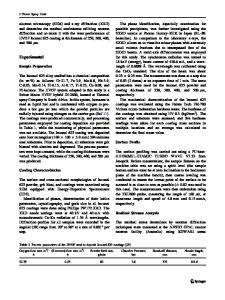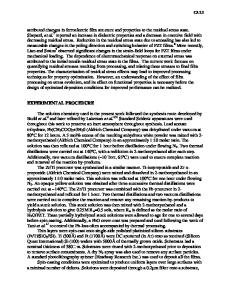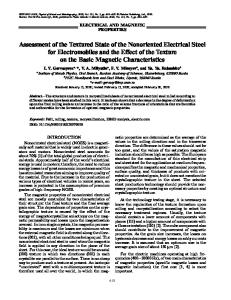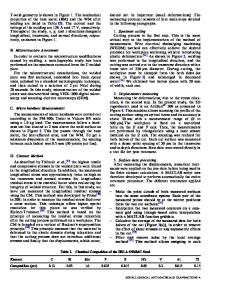Coating induced residual stress in nonoriented electrical steel laminations
- PDF / 472,166 Bytes
- 10 Pages / 584.957 x 782.986 pts Page_size
- 15 Downloads / 333 Views
To produce the magnetic core of electric motors, nonoriented electrical steels (NOESs) are used with an electrically insulating coating applied to the surface. Residual stress is induced during the coating process, which will alter the hardness and magnetic domain structure of the NOES. In this study, the effect of the coating is examined, specifically, its role in creating a residual stress near the coating/steel interface. This stress was investigated by the nanoindentation technique. With this method, a ;30 lm deep affected area was observed for NOES along both the rolling and transverse cross section directions, when in the presence of the coating. A biaxial tensile stress of ;200 MPa was calculated from the measured hardness values in the NOES, which was linked to variations in the magnetic domain structure near the interface. The observed magnetic domain structure was simplified by the reduction of supplemental domain structure near the coating/steel interface.
I. INTRODUCTION
Nonoriented Si–Fe steel is the key material for carrying magnetic flux in electric motors.1 To produce a high efficiency electric motor, magnetic properties of the NOES have been widely studied, and found to be closely related to the steel chemistry, microstructure, and texture.2–4 For further improving the motor efficiency, the importance of determining the residual stress field induced by manufacturing processes, such as stamping, welding, and coating processes, has been recognized.5–7 Electrical steels are typically used as thin laminations, each with an insulating coating, for better magnetic properties, environmental resistance, heat resistance, and lower core loss in the final product.8 The insulating coating, applied to isolate each lamination electrically and reduce eddy current losses, is commonly made from a mixture of organic and inorganic compounds.8 The application of the coating induces a nonuniform stress state in both the coating and the steel substrate.9 The residual stress can be a result of not only temperature and humidity variations,10 but also a misfit strain at the coating/steel interface.11 Stress in electrical steels is typically determined by the following methods: x-ray diffraction (XRD), magnetic Barkhausen noise, strip bending theory, and indentation. A few studies on the residual stress of the coating and the steel substrate have been carried out in the past.12,13 More specifically for electrical steels, the stress induced a)
Address all correspondence to this author. e-mail: [email protected] DOI: 10.1557/jmr.2014.218 J. Mater. Res., Vol. 29, No. 16, Aug 28, 2014
http://journals.cambridge.org
Downloaded: 13 Feb 2015
by the coating process was mostly studied in grain oriented electrical steel (GOES) laminates.6,14,15 Within the steel substrate, an average uniaxial tensile stress, ranging from 20 to 150 MPa, was estimated from strip bending theory.6 The presence of the tensile stress was found to be associated with improved core loss of the coated GOES.6 A similar beneficial effect from the presence of r
Data Loading...











